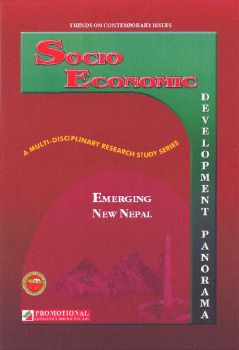Attaining Double-Digit Economic Growth: Some Lessons for Nepal in the International Context
Keywords:
Double-digit growth, Inclusive development, Economic agenda, Growth rate, Macroeconomic structure, CompetitivenessAbstract
Following the conclusion of the constituent assembly election held on May 10, 2008, insurmountable challenges have increased into meeting the development expectations and aspirations of the people in a reasonable period of time. Nepal traditionally remained an underdeveloped country under a low-growth syndrome, the opportunities and prospects of the economy needs to be unfolded by adopting and implementing development strategy that fosters economic growth through enhanced investment in the various sectors of the economy. The goal of poverty reduction along with enhancing a balanced and inclusive development requires investments at far greater proportions for which the economic development agenda needs to command its deserved attention and priority.
Some examples of the fast-growing economies across the globe would be worthy of consideration to help catalyze the growth opportunities into the desired development outcomes in Nepal. In the absence of a sound strategy framework and implementation, development campaign would not be able to speed up. The structural rigidities and constraints would continue to turn development environment and the development process mechanism into unfavorable areas. People in general will not entertain such a scenario while the economy would be least able to bear the burden and afford the implications of such an environment. Addressing such challenges on a sustainable basis constitute the priority economic agenda of the nation. Mobilizing greater amount of available resources and making their productive uses would determine the pace for the economic growth. The efficacy of the development process in Nepal determines upon maintaining an environment where resources would be optimally utilized.
Key words: double-digit growth, inclusive development, economic agenda, growth rate, macroeconomic structure, competitiveness
Socio Economic Development panorama Vol. 1, No.3 (2008) pp. 1-6

